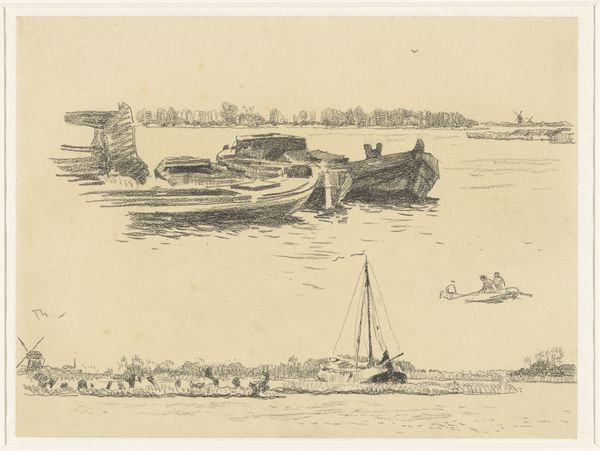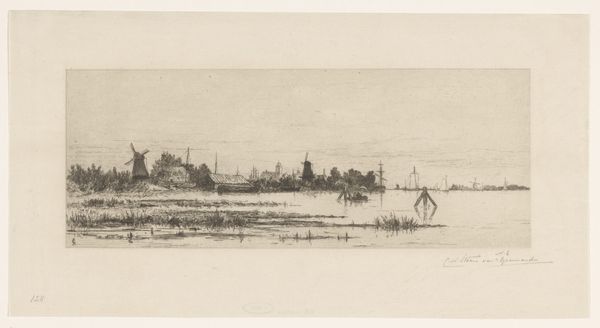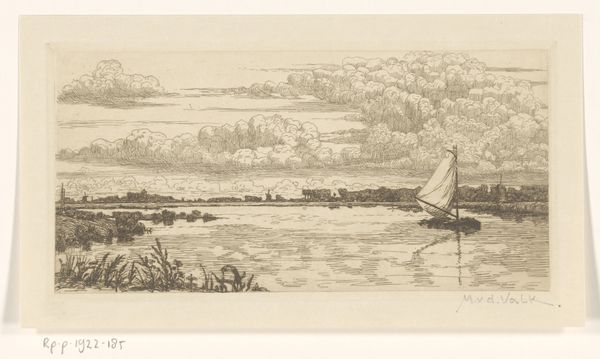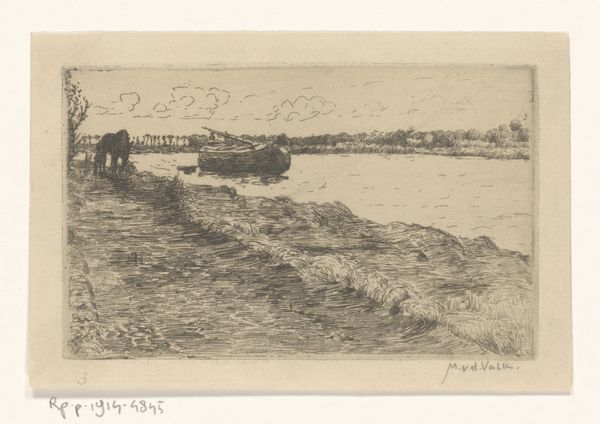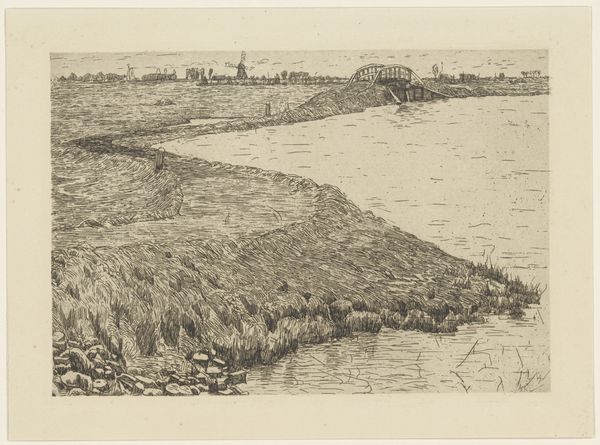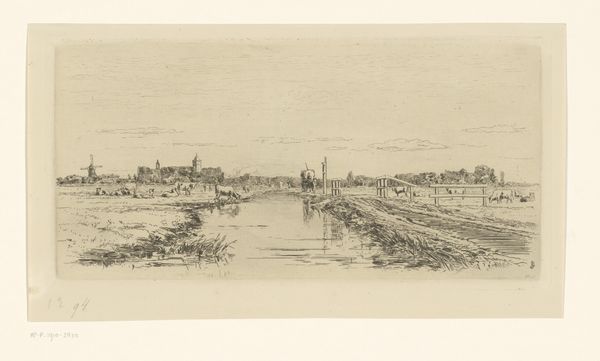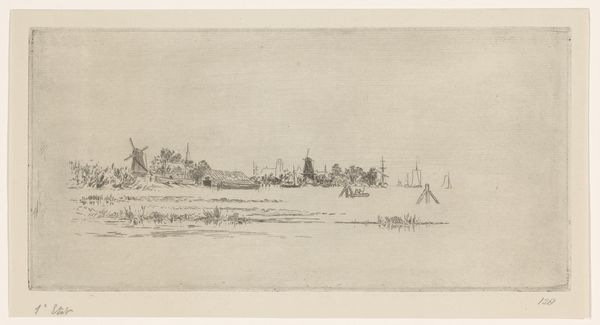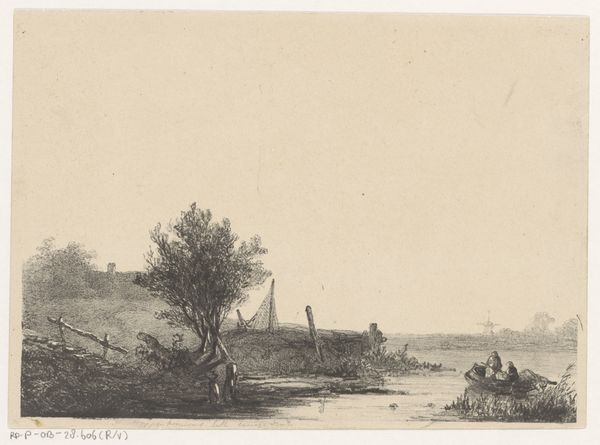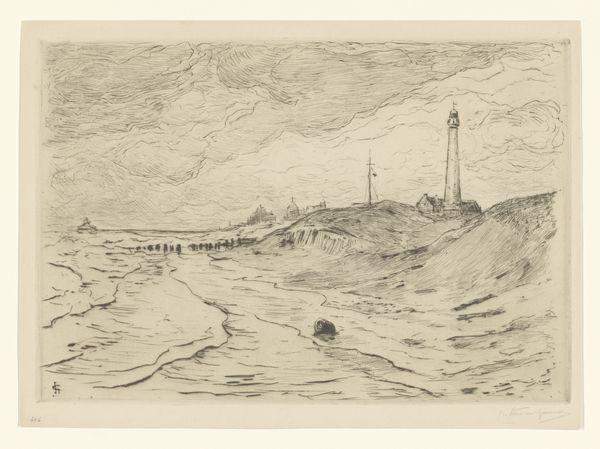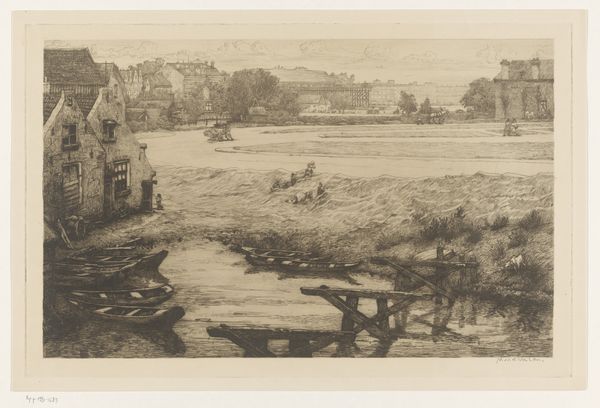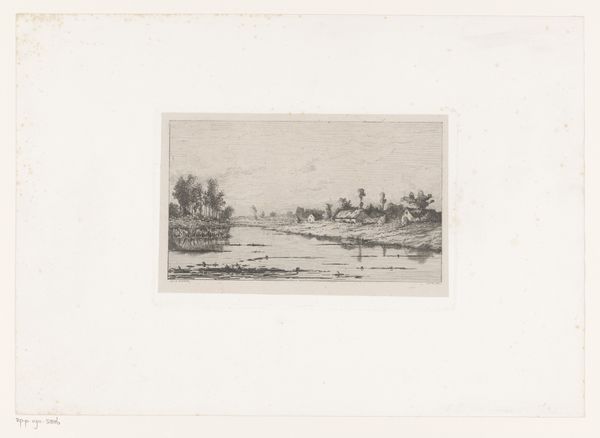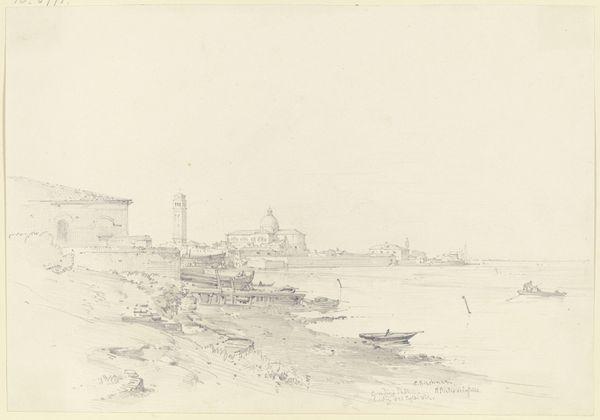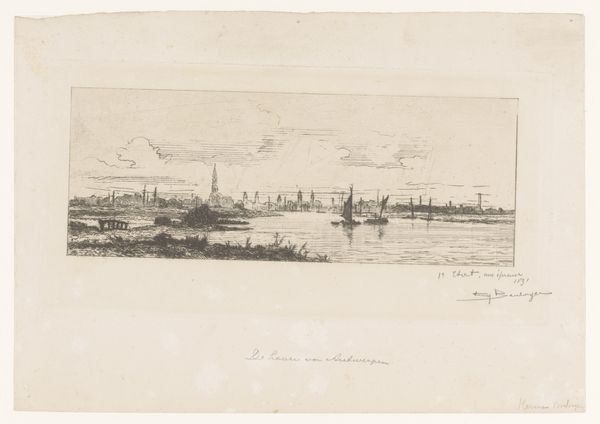
drawing, etching, ink, pencil
#
drawing
#
pen sketch
#
etching
#
landscape
#
river
#
etching
#
ink
#
pencil
#
realism
Dimensions: height 175 mm, width 263 mm
Copyright: Rijks Museum: Open Domain
Editor: So, this is "River View with Rowboat and Sailboat," a drawing by Willem Bastiaan Tholen, made sometime between 1870 and 1931. It's really quite subtle—mostly pencil and ink on paper, I believe. I'm struck by how quiet it feels. It makes me wonder about the lives of the people who lived by this river. What do you see in this piece? Curator: I see a visual representation of the relationship between landscape and power, particularly through the lens of the late 19th century. Consider the industrial changes happening at that time. Rivers were becoming crucial arteries for trade and industry, impacting the lives of those who lived alongside them. What social structures were dependent on, or disrupted by, these changes, do you think? Editor: I suppose the fishing and maybe transport industries were affected? So you're saying the quietness I perceive might mask underlying tensions? Curator: Precisely! The church steeple in the distance might represent a declining traditional authority, juxtaposed with the rising influence of trade symbolized by the sailboats. Note how the riverbank itself seems to be crumbling or eroded. How does this physical degradation relate to social shifts of the time? Editor: Hmm, like the old social order is also eroding? That's not something I would have picked up on initially. I was too focused on the tranquil scene. Curator: These serene landscapes were often deliberately constructed to conceal complex social realities. Consider, too, who had access to these leisurely scenes. The working class experience of the river would have been markedly different. The drawing prompts us to question whose perspectives are privileged in landscape art. What happens if we center those othered, often silenced, voices? Editor: I hadn't thought of that before – about who is *missing* from the scene. It definitely gives me a new way to approach landscape art in general. Curator: It allows us to consider not just what is depicted, but what isn’t, and the reasons why. This interplay, I find, is where the real conversation begins.
Comments
No comments
Be the first to comment and join the conversation on the ultimate creative platform.
